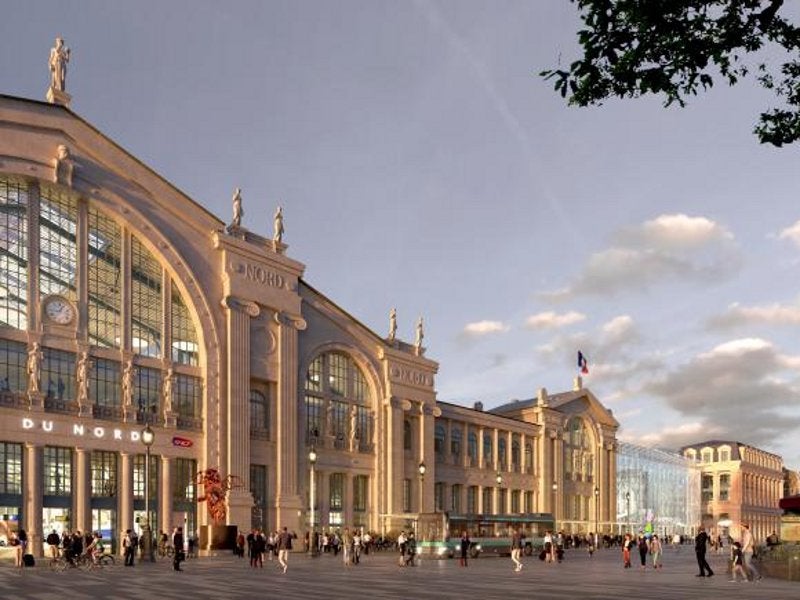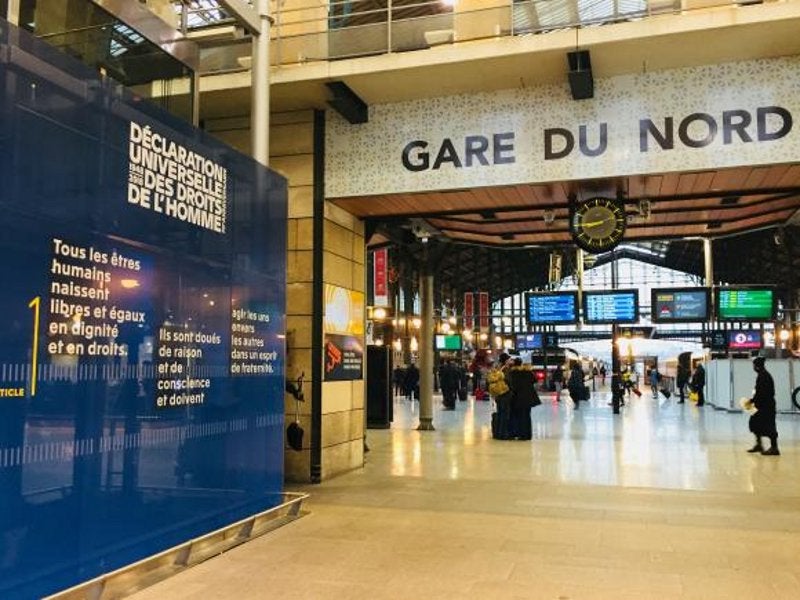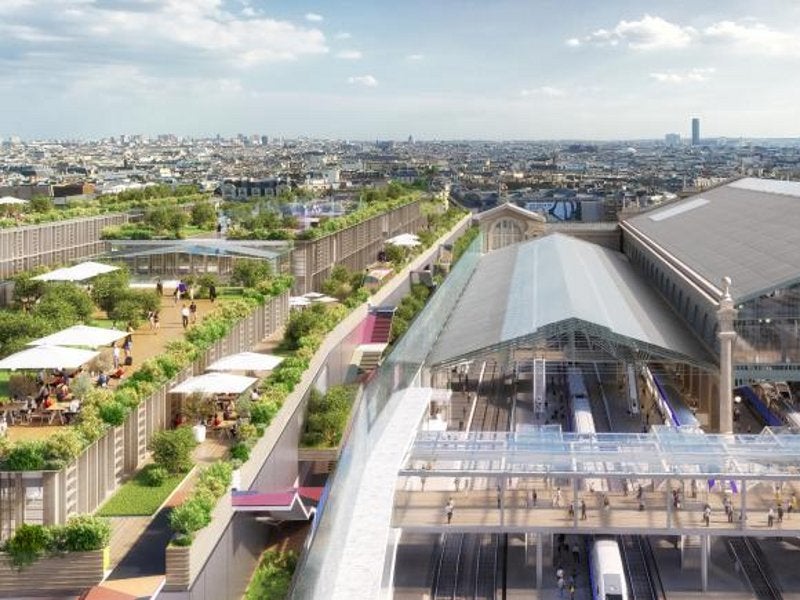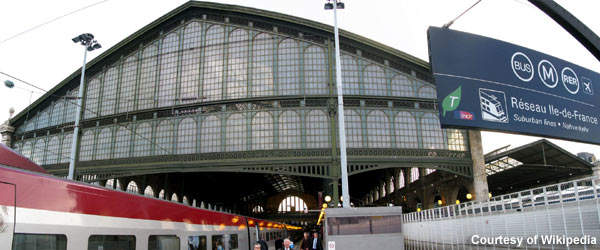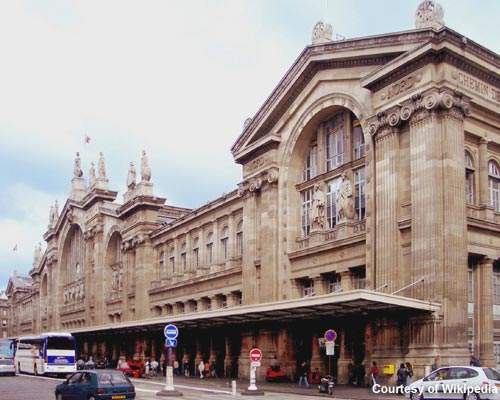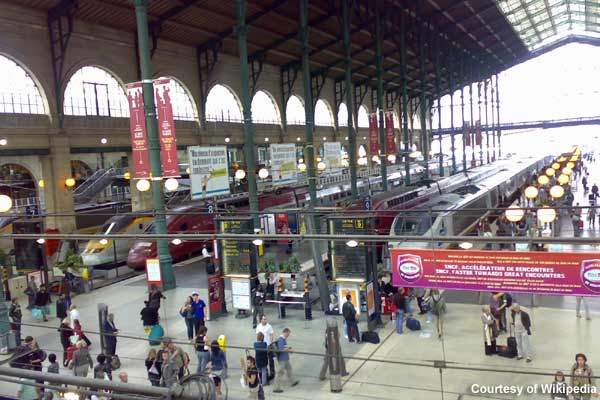The Gare du Nord railway station in Paris, France, is the busiest station in Europe and the third largest and busiest in the world.
The station has the capacity to handle 700,000 passengers and 2,200 train movements a day and is regarded as the second biggest station in terms of passenger capacity. Located in the heart of Paris, the station provides easy access to many of the city’s tourist attractions.
Gare du Nord railway station history
The original Gare du Nord was designed by Léonce Reynaud and constructed by Bridge and Roadway Engineers.
The old railway station was demolished in 1860 and the construction of the new station was carried out until 1865. It opened in 1864, however, while construction work was still taking place.
Gare du Nord design and construction
The new railway station was designed by Jacques Ignace Hittorff, a German-born French architect. Jacques adopted a Beaux-Arts (neoclassical) style of architecture in the design of the railway station, which has a U-shaped terminus.
Construction of the new railway station started in 1860 and was completed in December 1865. The façade of the original station was removed and transferred to Lille.
Five additional tracks were added in 1884 to cope with the increase in railway traffic. Another extension was built in 1889 on the eastern side for suburban rail lines, after which further expansion works were carried out in the 1930s and 1960s.
The railway station features 23 female statues that adorn the 540ft façade representing destinations such as Paris, London, Berlin, Warsaw, Amsterdam, Vienna, Brussels and Frankfurt. The façade is built with several stone slabs, which is supported by a cast iron beam.
The 216ft-wide, 600ft-long interior of the station contains a large central hall and a glass train shed. It is supported by iron pillars manufactured by Alston & Gourley’s ironworks based in Glasgow, Scotland.
Gare du Nord railway services
Gare du Nord is served by the Paris Metro transit system, the Réseau Express Régional (RER) railway system and several bus routes.
The metro system has two lines operating at the station, which include line 4 and line 5. Line 4 runs from the north to south of Paris, and line 5 has extensions to the Gare de Lyon (a rail terminal in Paris), and Pantin and Bobigny.
In addition, there are three RER lines operating at the station, namely lines B, D and E. Line B provides connections to the Charles de Gaulle Airport; line D is connected to the Gare de Lyon and Line E is connected to St Lazare, a rail terminal in Paris.
SNCF, Eurostar and Thalys provide services at the railway station. Eurostar runs trains from Paris to London; Thalys offers services to Belgium, Germany and Holland; and SNCF operates services running between Paris and Amiens.
Gare du Nord railway station facilities
The Gare du Nord railway station provides many facilities such as wireless internet access, gift shops, ATM machines, cafés, a registered baggage service and a currency exchange. The departure lounge facilities at the railway station are available to all travellers, and there is a dedicated departure lounge for Eurostar passengers.
Eurostar passengers can also benefit from e-ticket collection facilities at Gare du Nord. The easy-to-use system enables passengers to collect their tickets from the e-ticketing machines and features touchscreen technology to guide travellers through the process.
Four e-ticket machines are located at the railway station on the mezzanine level. Passengers can also collect tickets from SNCF ticket machines.
The station also has shops, including food, gifts, culture, leisure, house equipment, hygiene, health, beauty and tobacco. It also offers customer account services such as the eTiquette system and lost property service.
Gare du Nord railway station expansion
Gare du Nord is currently undergoing a €600m ($696m) expansion project in order to accommodate passengers visiting the 2024 Olympic Games. It will have the capacity to accommodate up to 900,000 passengers a day by 2030.
The expansion project will increase the station size from 36,000m² to 110,000m² and ass a new departure terminal towards the eastern side of the station. It will also include the expansion of Eurostar terminal and creation of a 1,500m² new surface area in the cross-channel terminal.
Also, the project will include space for sports activities such as golf courses, gym, basketball courts, changing rooms and lockers.

